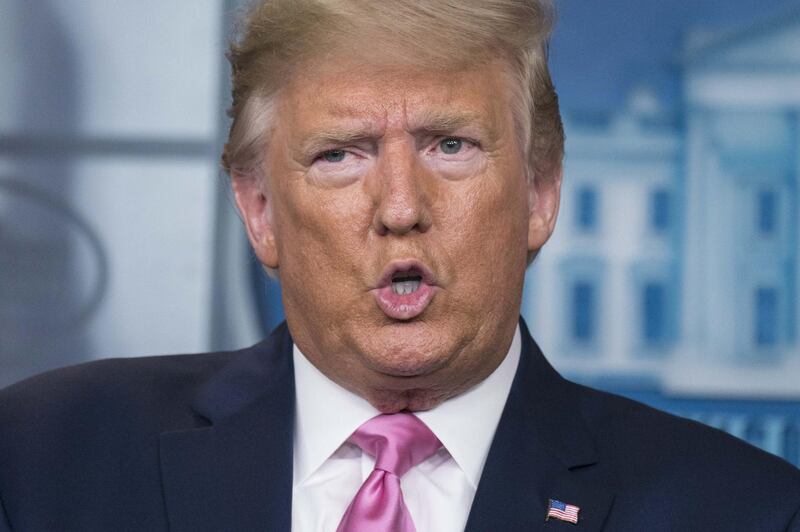The Russians have become notorious using Facebook and Twitter accounts to amplify propaganda, but there’s a less shadowy way to advance your political cause: by creatively using eye-catching video and viral techniques to grab people’s attention.
That’s one of the strategies now being used by US presidential hopeful Mike Bloomberg, who is putting money into an outfit called Meme 2020, which produces pro-Bloomberg viral memes on Instagram.
But as ever, it is Donald Trump’s explorations of online culture that provoke the most comment.
At the weekend, he retweeted a video featuring his head superimposed on footage from the Indian medieval epic Baahubali 2.
It transformed him into a triumphant warrior, riding a chariot, flanked by loyal soldiers and welcomed by cheering crowds. You can see why it might have appealed to him.
To celebrate Trump's visit to India I wanted to make a video to show how in my warped mind it will go......
— Sol🎬 (@Solmemes1) February 22, 2020
USA and India united! pic.twitter.com/uuPWNRZjk4
The reality of his arrival in India was more mundane. He walked down the steps of Air Force One with his wife and two security staff in sunglasses.
But why bother with fact when fantasy can get your message across more effectively?
At the weekend, the Special Operations Joint Task Force in Syria tweeted a cartoon-like video to promote their activities, described by one respondent as “part 1980s shopping channel, part 1950s comic”.
The tweet was deleted, but not before being viewed thousands of times.
Its aim was clear: to provoke a strong reaction in an attention-based economy. After all, governments are in the business of self-promotion, just as much as any YouTube influencer.
The problem they have is that most government activity is not interesting to the public.
Photographs of politicians signing documents on a wooden desk does not qualify as share-able media – not least when it’s wedged between a video of kittens and a sensationalised account of what celebrities have been up to.
There has long been a sense that venturing into the world of memes is inadvisable on a government social media account. But there are exceptions, where wit, flair and audio-visual skill has been positively received by the wider public.
The US Consumer Product Safety Commission has, for many years, used a team of Photoshopped animal characters to get its message across in a kooky fashion.
The same goes for the New Jersey Government, whose jokes and witty digs have helped to accumulate more than 200,000 Twitter followers.
A storm approaches! #BarksMcWoofins takes to the skies on their smoke alarm sky chariot to remind you to have working CO alarms if you own a portable generator! #NCPW2018 #invisiblekiller pic.twitter.com/zA0mE1syt7
— US Consumer Product Safety Commission (@USCPSC) March 7, 2018
In recent months, politicians have been following their example and improving their game.
The Dutch Ministry of Transport used a viral BMX video to promote the use of bicycle lights.
New Zealand Prime Minister Jacinda Ardern’s whizz-bang, two-minute video listing her government’s achievements grabbed more attention than a press conference ever could.
And a video featuring US Congresswoman Alexandria Ocasio-Cortez changing out of her flat shoes into heels on the New York subway is partly credited for her first electoral successes.
But these examples are clever and considered. Stupid, outspoken or outrageous messages also cut through.
Populist Tunisian leader Kais Saied may have become known as “Robocop” for his charmless image, but his supporters turned it to their advantage with viral videos portraying him as a man of steely resolve.
Mr Saied's government, as far as we know, has not been involved but given that such an approach works, why not go all in?
After all, we appear to be in an era where watching your words is becoming less and less of an issue.
It is happening, slowly. Some Nordic politicians have openly mocked Donald Trump in tweets that have gone viral.
The former Danish environment minister, Ida Auken, used a Twitter video to ridicule the US President’s claim that wind turbines cause cancer.
Mr President - Greenland is not for sale. But Denmark has a much better deal for you! Watch this. #dkgreen #dkpol pic.twitter.com/mlRwAVzVFg
— Ida Auken (@IdaAuken) August 20, 2019
During the last election in the UK, the press department of the governing Conservative Party caused outrage by renaming its Twitter account “FactCheckUK” during televised debates and pretending the posts were from an official fact-checking agency.
Such bold approaches are not without risks. Spare a thought for Levi Tillemann, a budding US Democrat who published a video where he pepper-sprayed himself in the face to make a (now forgotten) point about gun violence.
Mr Tillemann was savagely mocked online and lost his primary by a huge margin.
In terms of irreverence and a lack of regard for protocol, the gloves may be off. Mr Trump’s use of social media has been much commented upon, but tends to be treated as an anomaly.
It isn’t. In the battle for our attention, things are only going to get sillier.






